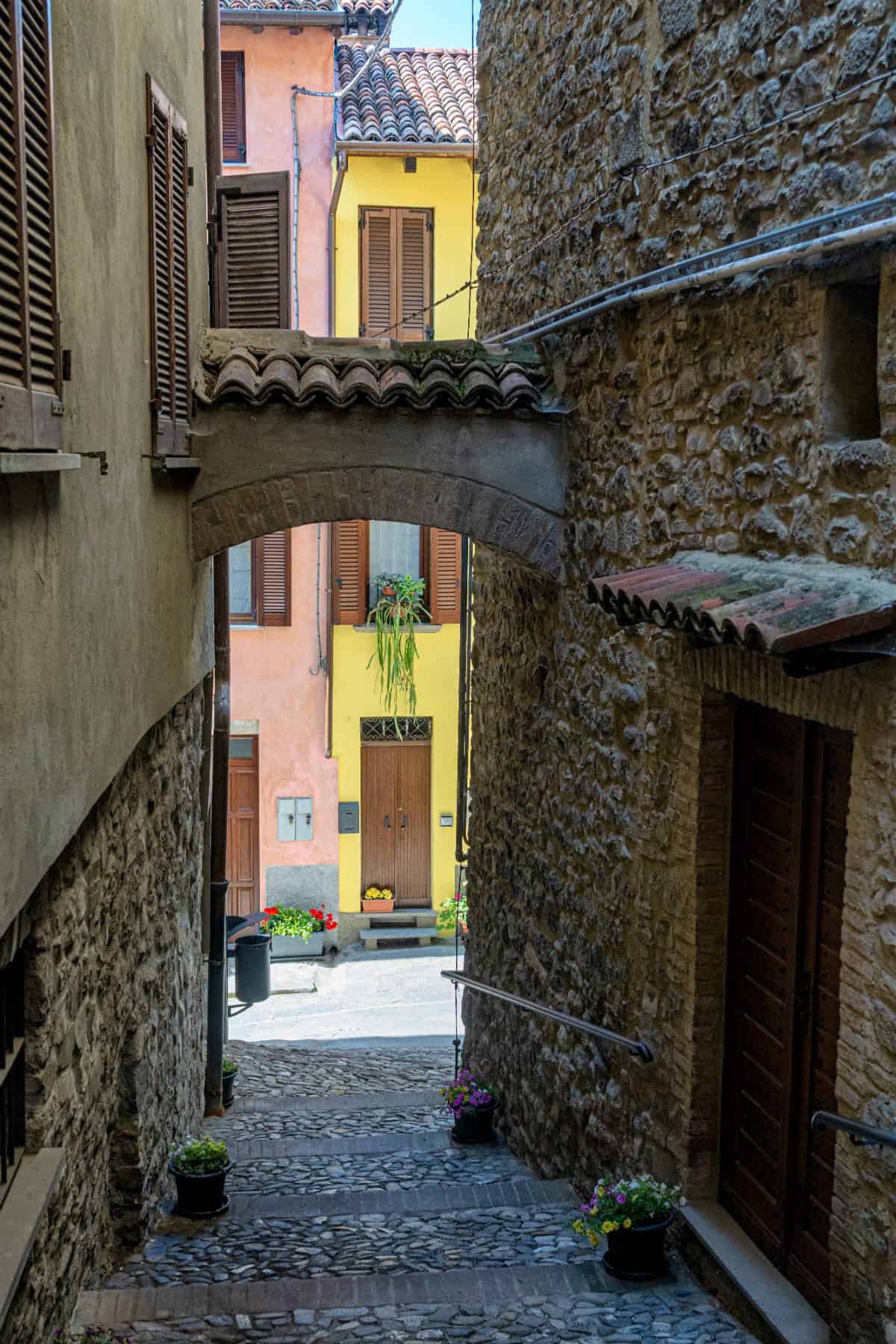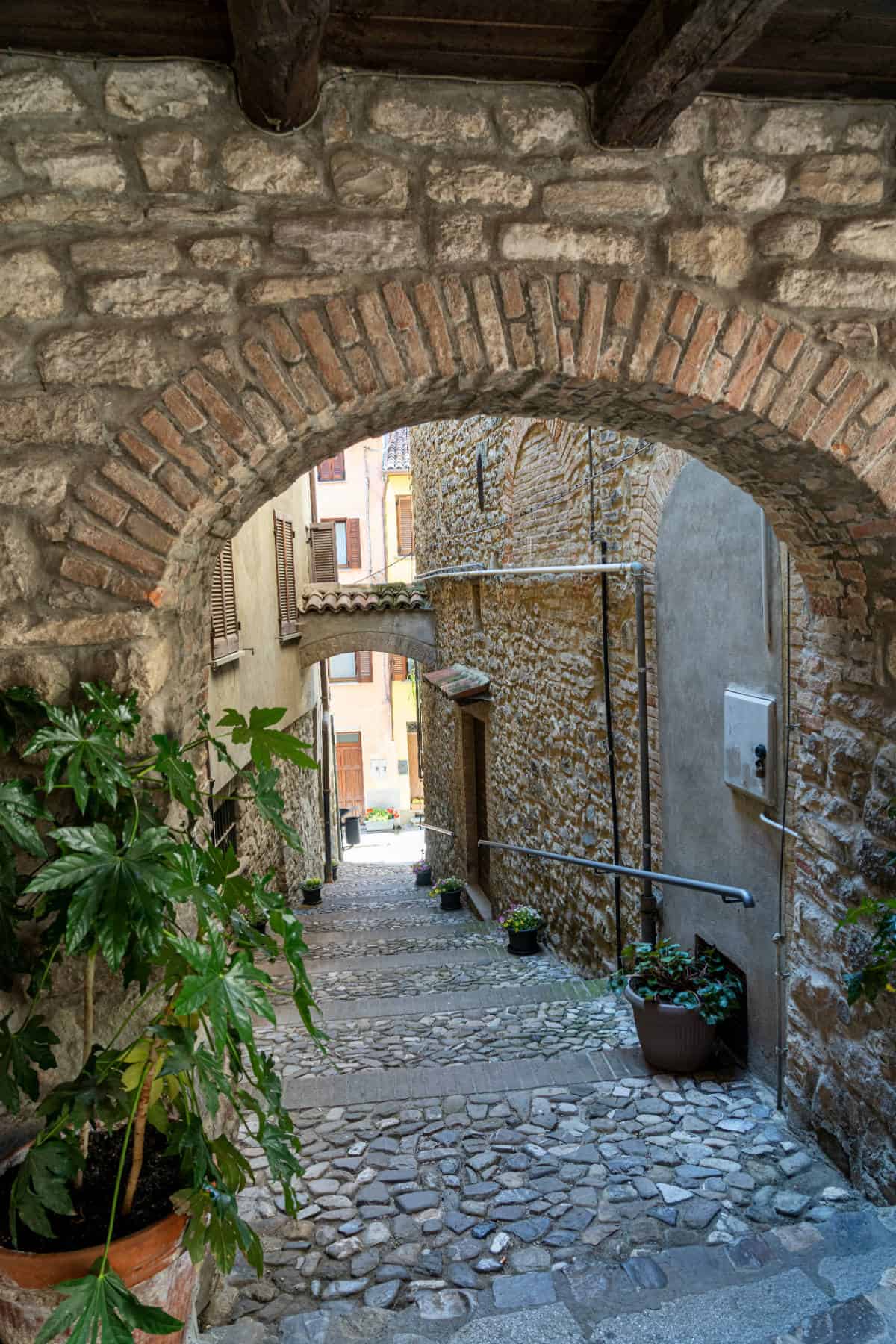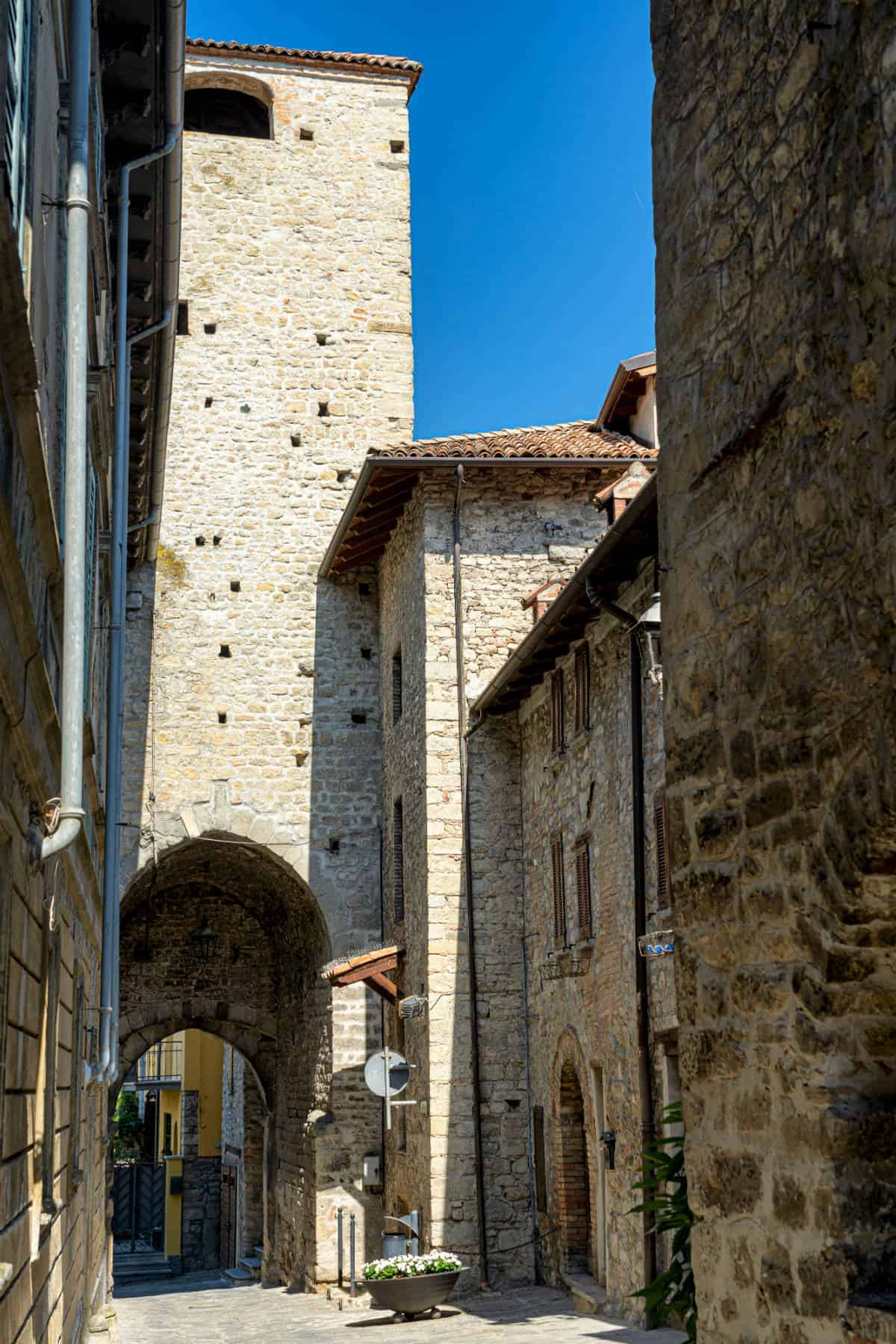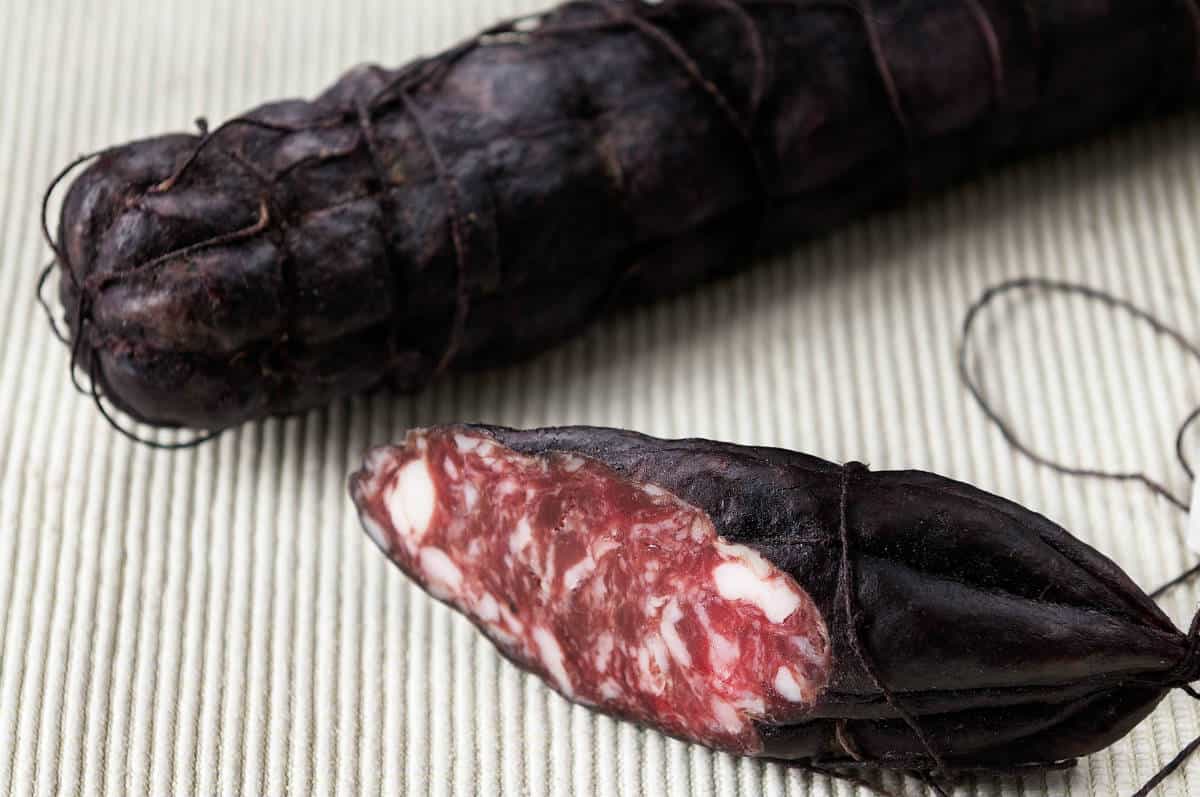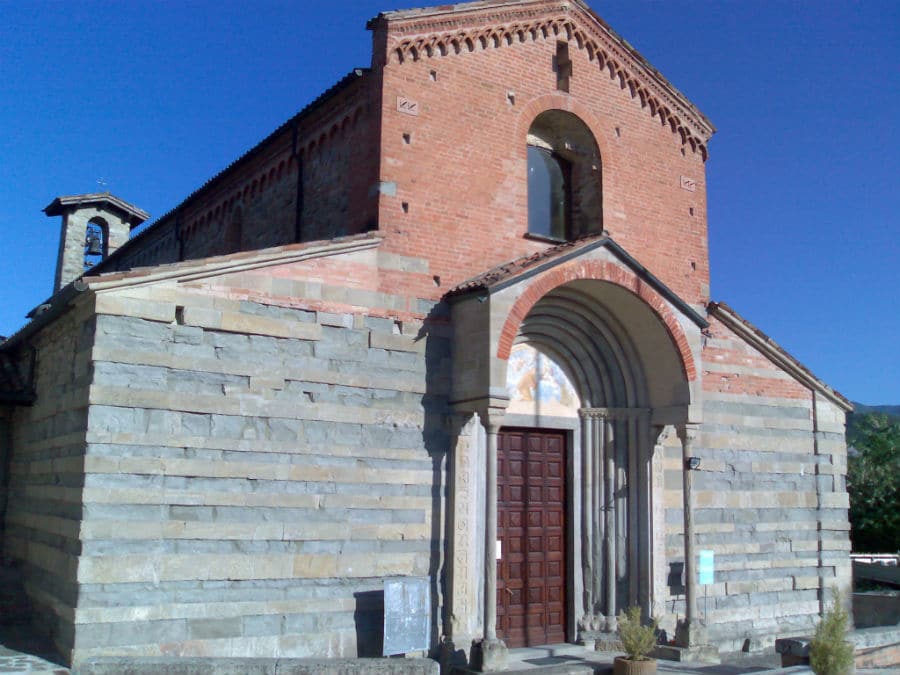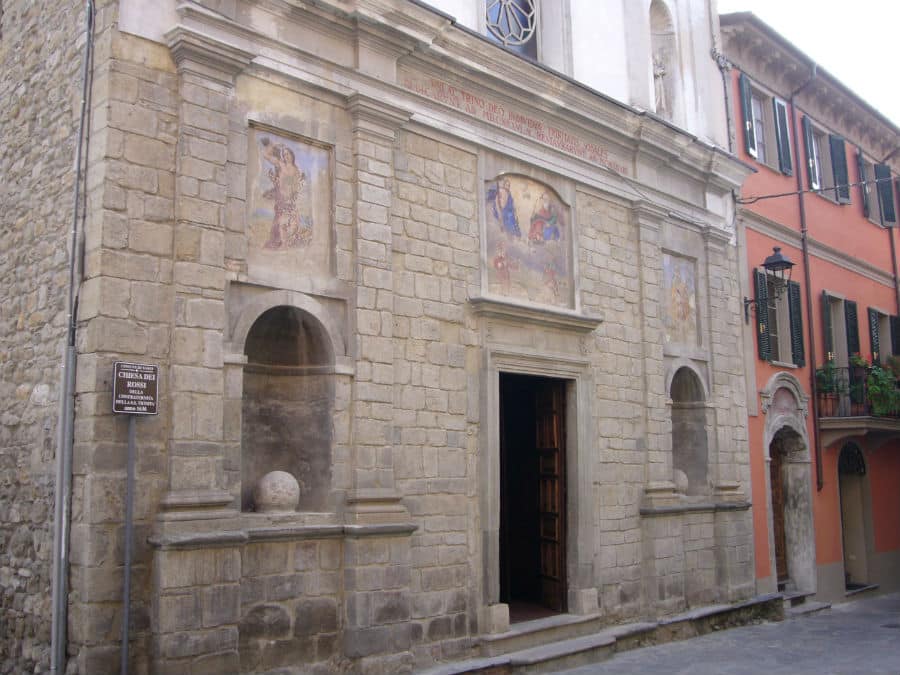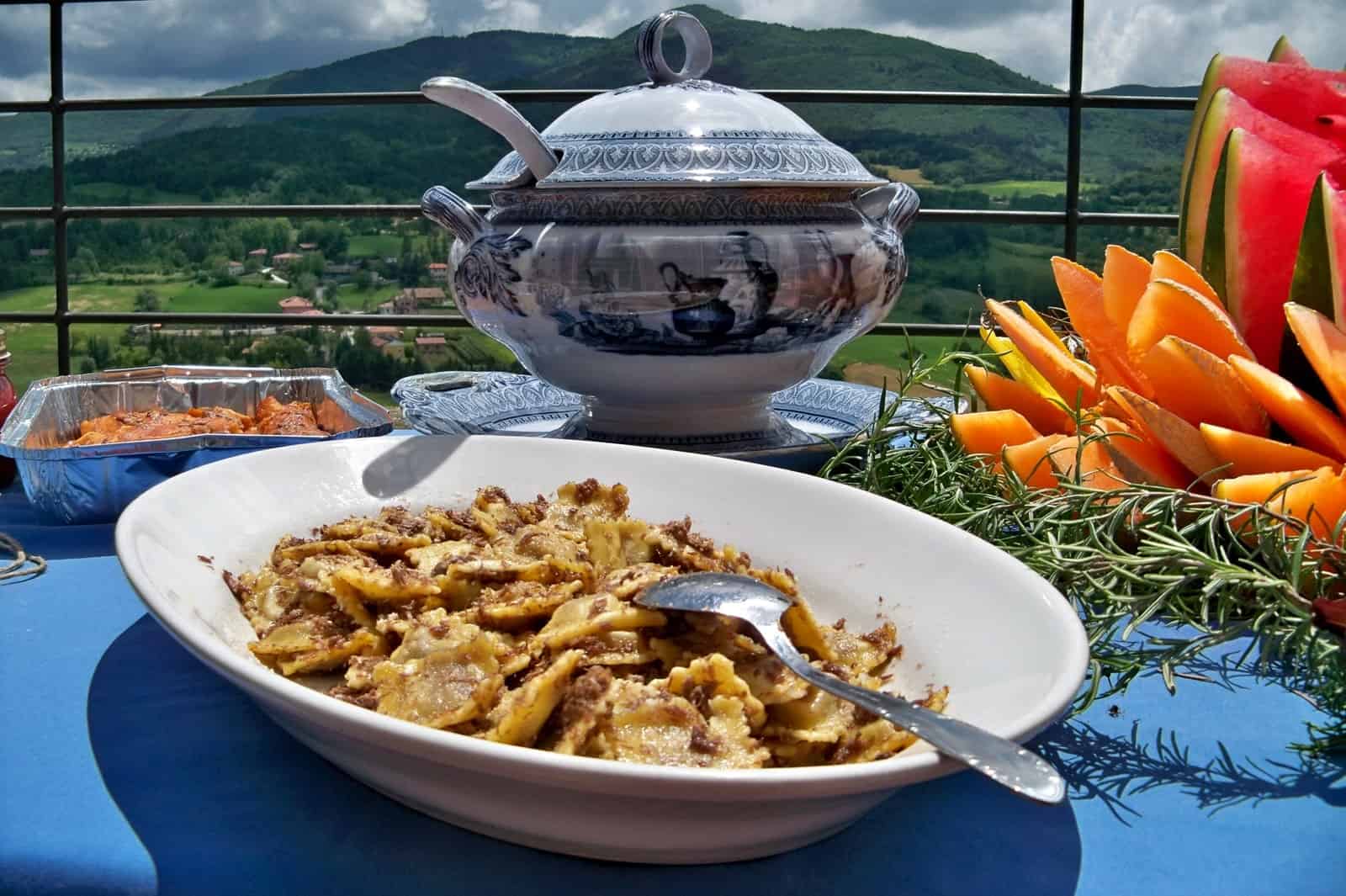The village of Varzi (Vörs in dialect of Varzese) is located in Oltrepò Pavese, Lombardy. Located in the center of Valle Staffora, its origins are probably Liguria (the name contains the var root which, considering the Ligurian rivers Var and Vara, should mean river). Known since 993, when it was owned by the abbey of San Colombano di Bobbio. At Varzi stood the ancient church of San Germano. Like the rest of the valley, it fell under the power of the Malaspina, which had its regular investment in 1164. The Imperial diploma does not mention Varzi yet, but the surrounding castles. Probably the country was beginning to develop thanks to the tradesmen of the merchants who, crossing the salt path, from the plain climbed the valley to reach the Ligurian coast through the steps of Pénice, Brallo and Giovà. Varzi's fortune began in the 13th century. The subsequent hereditary divisions between the Malaspina established in 1221 the separation between the Malaspina del Dry Spino (in Val Trebbia) and Spino Fiorito (in Valle Staffora). The latter were divided in 1275 between three other lines. The Marquis Azzolino, the founder of the Varzi line, took up residence and built the castle, fortifying the hamlet and making it the capital of a vast lordship. It included, besides most of the municipality of Varzi, also the village of Menconico and part of those of Santa Margherita of Staffora and Fabbrica Curone. In 1320 the Malaspina gave Varzi the Statutes, compiled by the Cremonese lawyer Alberto dal Pozzo.
These divisions inherited inevitably resulted in the ruin of the marquis: he not only had to acknowledge the supremacy of the Duke of Milan, who made his own choice in spite of his imperial diplomas, but ended up falling under the rule of a stranger, Count Sforza of Santa Fiora, who after obtaining the investments of the Menconico landlord in which the local line of the Malaspina had been extinguished, gradually bought most of the feudal quotas, ending to be recognized as the only lord of Varzi. Malaspina remained only the title of Marchesi. The progressive ruin of the Malaspina did not diminish the prosperity of Varzi, which remained the center of valley trade and one of the most important centers of the Oltrepò. In the 18th century, after the Savoy in 1743, it was the seat of one of the three cantons in which the province of Oltrepò was divided. The feudal regime ended in 1797. By the Bobbies of the Kingdom of Sardinia in 1743, according to the Treaty of Worms, he became part of the Province of Bobbio. In 1801 the territory was annexed to Napoleonic France until 1814. In 1859 he entered the Circondario di Bobbio and then Lombardy. In 1923 the Circondario di Bobbio was subdivided into several provinces. After September 8, 1943, as in the entire Oltrepò Pavese, the first partisan bands formed and Varzi became the center of a free zone (the so-called 'partisan republics') at the end of September 1944. It remained free until 29 November.
This country is part of the culturally homogeneous territory of the four provinces (Alessandria, Genoa, Pavia, Piacenza), characterized by common customs and customs and an important repertoire of very ancient music and dances. The principal instrument of this area is the Apennine piercings accompanying the accordion, and once from the Müsa (Apennine gourmand), guides dances and animates the festivities.
They certainly deserve a visit to the Castle of Malaspina, the parish of San Germano and that of San Colombano.
It is also noteworthy that not far from Varzi passes the ancient Via del Sale Lombarda, a route that allowed the trade of salt by connecting Pavia with Genoa. Through this passage the goods came from the north, especially wool and weapons, to reach the port of Genoa where, for the return journey, salt was loaded, valuable precious material found in the areas far from the sea, which is indispensable for the preservation of food and tanning the leather. The route followed the whole valley of Staffora (province of Pavia), crossed the ridge dividing the val Borbera (province of Alessandria) from the val Boreca (province of Piacenza) to go down to Trebbia val. The route from Pavia headed south, on roads and mule tracks, touching Voghera, went along the Staffora valley, passing through Varzi, climbing the valley to the village of Castellaro, climbing Mount Bogleglio (1492 m), crossing the ridge to Mount Chiappo (1700 m), Mount Cavalmurone, Mount Legnà, Mount Carmo and Mount Antola (1597 m) descended to Torriglia in Val Trebbia, a meeting point with the Piedmontese and Emilian trails, and from there easily reached Genoa through the Scoffera's step.
After the fall of the Longobards by Charlemagne, the Holy Roman Empire constituted the Imperial Feudi with the aim of maintaining a safe passage to the sea; assigned these territories to loyal families who ruled for centuries these feuds. The valleys of Staffora, Borbera, Curone, Trebbia, Aveto, Magra were under the domination of the Malaspina family which, in agreement with the city of Pavia, guaranteed the flow of goods through its territory by collecting related taxes and gabelles and guaranteeing the safety of goods and the protection of travelers. The opening of this road to the sea became the village of Varzi a very important shopping center with shops, warehouses, storage facilities and a walled castle. The transport of the sacks of salt was carried out in the form of a mule, because the narrow and unpleasant mule grooves that hung on the slopes did not allow the passage of wagons. A network with staging points offered men and animals, lodging and stables for this long crossing. Today, the Salt Street, lost its commercial value, has become a destination for hiking and trekking, turning into an environment of particular naturalistic interest.


